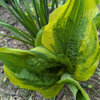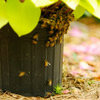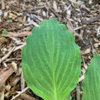Questions about Hostas in Pots
landlady
11 years ago
Related Stories

REMODELING GUIDES9 Hard Questions to Ask When Shopping for Stone
Learn all about stone sizes, cracks, color issues and more so problems don't chip away at your design happiness later
Full Story
EXTERIORSCurb Appeal Feeling a Little Off? Some Questions to Consider
Color, scale, proportion, trim ... 14 things to think about if your exterior is bugging you
Full Story
GARDENING GUIDESNew Ways to Think About All That Mulch in the Garden
Before you go making a mountain out of a mulch hill, learn the facts about what your plants and soil really want
Full Story
FEEL-GOOD HOMEThe Question That Can Make You Love Your Home More
Change your relationship with your house for the better by focusing on the answer to something designers often ask
Full Story
TASTEMAKERS5 Questions for Heath's Adam Silverman
A studio director brings out-of-the-ordinary dinnerware and home accessories to Heath Ceramics' showrooms. See where he goes for inspiration
Full Story
KITCHEN DESIGN9 Questions to Ask When Planning a Kitchen Pantry
Avoid blunders and get the storage space and layout you need by asking these questions before you begin
Full Story
REMODELING GUIDES13 Essential Questions to Ask Yourself Before Tackling a Renovation
No one knows you better than yourself, so to get the remodel you truly want, consider these questions first
Full Story
Design Dilemmas: 5 Questions for Houzzers!
Post Ideas for Landscaping for a Modern Home, Updating a Rental and More
Full Story
CONTAINER GARDENSContainer Garden Basics: How and When to Water Potted Plants
Confused about soil moisture, the best time to water and what watering device to use? This guide can help
Full Story
KITCHEN DESIGNHouzz Call: Tell Us About Your First Kitchen
Great or godforsaken? Ragtag or refined? We want to hear about your younger self’s cooking space
Full Story





ken_adrian Adrian MI cold Z5
landladyOriginal Author
Related Discussions
Emerging hostas-Newbie ??
Q
Question about winterizing hosta in a pot
Q
Ovwerwintering hostas in pots question
Q
Question for Denny on Hostas in Pots
Q
Babka NorCal 9b
landladyOriginal Author
landladyOriginal Author
loujak
ilovetogrow z9 Jax Florida
Babka NorCal 9b
landladyOriginal Author
bkay2000
alyciaadamo
landladyOriginal Author
bkay2000
Steve Massachusetts
landladyOriginal Author
eclecticcottage
Steve Massachusetts
landladyOriginal Author
hostahillbilly
bkay2000
Steve Massachusetts
Cricket_Love
eclecticcottage
landladyOriginal Author
Babka NorCal 9b
landladyOriginal Author
buyorsell888